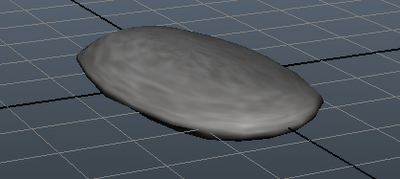This refers to the ideal way in which a computer game should come together. From ideas to finished code handed over for manufacturing, this process can be complex, even for a small game. There is no set order for an end result, and each company will have it’s own preferences regarding how they go about organizing their resources. Companies change continuously and refining their development processes to suit their games. The start of a design process comes when there is an idea. This spark can come from one of many and any sources.
Existing intellectual property means that the game is intended to embody a previously existing idea. Possible sources include TV, comics, films and previous installments of games. Development of an existing storu or concept is quite a common feature of the modern game development world. It can be a lucrative proposition. Competition for rights to certain intellectual properties can be fierce; deals between the cinema and Marvel industries for example allowed a select group of producers to make films with an entirely new basket of ideas.
Working with similar themes are a common start for games. As an example, if one game company has a successful title concerned with classic racing cars, then as the director of another company, you might ask your designers to come up with a similarly themed game with enough differences to avoid copyright issues. This could be criticized as a lack of imagination, though sometimes this second game is better than the first as you can take existing ideas, in some form, and re-shape them to be better.
New ideas can come from combining old games with new inspirations, that can stem from a ‘what if?’ conversation. Mixing and matching ideas both old and new can lead to new interpretations of older stories through different mediums, such as Lego Star Wars. Warhammer 40k introduces races like Elves typically found in fantasy settings rather than sci-fi setting.
Brand new ideas are the riskiest propositions. Few games designers have achieved critical acclaim with entirely new ideas. As a result, developers are weary that gamers will not accept new titles as readily as titles that are already well established. There are many puzzle games out there but only one Tetris. Mario is perhaps the most iconic original character. However, even if you don’t develop an idea for a whole new game, the ideas might come in useful in some other way.
Ideally, games development teams should be structured to work collaboratively. Having a designer involved at an early stage can generate some new concepts whilst a programmer can point out technical opportunities that might be applicable. As a number of ideas take form and the teams expand, the majority of the work is for the designers and animators, with the programmers closely following, developing the code to bring the game to life. As the process goes on, so does the need for 3D asset generation, level design and the implementation of the programming that will make the game run. Alpha and beta testers will then go through the game and find any inadvertent faults before declaring their satisfaction. Throughout this process, the relevant managers and AQ staff monitor, guide and enable the process to its conclusion.
Designers are responsible for the look and feel of the game; they generate the concept, the story, gameworld and mechanics. They are concerned with the aspects of the game that grab public attention and hopefully make it a success. Roles like game designer, script writer and level designer can fall under this name. Posts in seniority can range from junior to leads, who manage staff.
Art and animation staff give visual form to the designer’s ideas, from 2D drawings right up to the 3D models and animations. These visualizations are necessary to develop the game’s unique style. These roles overlap with that of the digital modelers and animators who create the assets to be included within the game.
Sound and music engineers are very important; I frequently uphold the opinion that sounds in games are more often undervalued than not. These roles may cover that of the sound effects producers, musicians and may cover technical aspects such as incorporating the soundtrack into the game.
Programmers create the code for the engines that deliver games. Despite coming from highly technical backgrounds. programmers have a very unique creative aspects when implementing their skills to the creation of a fully functioning playable environment. Though creating code may be an unforgiving logic exercise, if it is to deliver the sound of a delicate breeze, or the effect of a football kicked through the air, the code must be created by someone with sympathy for the subject matter.
QA professionals and testers make sure the game works and that it meets specifications. Testers have a pivotal role in achieving this, finding and locating problems that developers may have overlooked for whatever reason and can then work on fixing or correcting or improving upon.





















